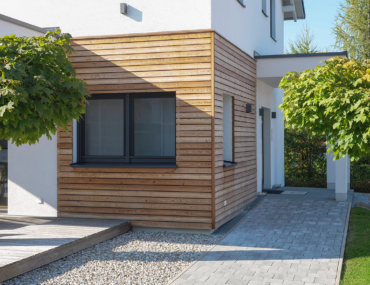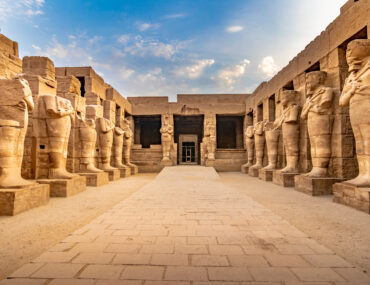Homeownership comes with a long list of responsibilities, and maintaining your home’s infrastructure is one of the most important. But how often should you actually be upgrading the wiring, plumbing, or overall structural components of your home? Some experts suggest revisiting your home infrastructure every five years. Is this a realistic or necessary timeline? Let’s dive into the topic, especially as new developments like Jirian in 6 October City spark interest in long-term home investment.
Understanding House Infrastructure: What Does It Include?
Before discussing timelines, it’s important to clarify what “infrastructure” means in a residential context. House infrastructure typically includes:
- Electrical systems (wiring, panels, sockets)
- Plumbing (pipes, water heaters, drainage)
- HVAC (heating, ventilation, air conditioning)
- Roofing and insulation
- Foundations and structural support
These systems form the backbone of your home’s functionality. If one of them fails, it can affect your entire living experience.
Is a 5-Year Cycle Necessary?
Renewing infrastructure every five years might sound excessive, but this recommendation doesn’t necessarily mean a full overhaul. Instead, it suggests a detailed inspection and possible partial upgrades. The idea is to catch problems early before they evolve into costly emergencies.
For example, while high-quality plumbing might last 20-30 years, joints and valves may wear out sooner. Electrical systems in older homes can become outdated fast, especially with increasing digital device use. Five years is a practical timeline to assess and decide what needs work.
What Influences the Need for Infrastructure Renewal?
Several factors can determine how often your home needs an upgrade:
1. The Age of the Property
If your home is more than 15 years old, chances are some systems are already past their prime. In contrast, a newly built unit in a modern project like Jirian would naturally have newer infrastructure.
Jirian is one of the most talked-about new communities in West Cairo, drawing attention from some of Egypt’s top developers. With properties designed to modern standards, homeowners in Jirian may not need significant upgrades for the first decade.
2. Environmental Conditions
Egypt’s climate plays a role in how infrastructure holds up. For instance, extreme summer heat can strain cooling systems. Water quality in certain areas might accelerate pipe corrosion. These environmental factors should factor into your maintenance plan.
3. Usage Patterns
A house that hosts a family of five will age faster than a vacation property used twice a year. Heavy use speeds up wear and tear. If you’ve had any change in occupancy or lifestyle, it might be time for an infrastructure review.
4. Changes in Safety Codes and Technology
Safety regulations evolve. Electrical systems that met standards ten years ago may now be outdated. Plus, technology keeps moving forward. Smart home systems, solar power integrations, and energy-efficient heating options may require you to upgrade older infrastructure.
The Costs vs. Benefits of Regular Updates
Upgrading infrastructure costs money, so it’s natural to weigh the pros and cons. Here are some key points to consider:
Benefits:
- Safety: Updated systems lower the risk of electrical fires or water leaks.
- Efficiency: Newer components often consume less energy and water.
- Property Value: Well-maintained homes attract higher resale or rental values.
- Peace of Mind: You’re less likely to face surprise breakdowns.
Downsides:
- Upfront Costs: Even small upgrades can add up quickly.
- Disruption: Plumbing or electrical work can interrupt daily life.
But if you plan upgrades smartly and gradually, the benefits usually outweigh the costs in the long run.
What Are Experts Saying?
The rise of projects like Jirian indicates a growing demand for quality living standards. Top developers entering this market are focusing on sustainable designs, smart infrastructure, and long-term durability. That’s exactly why investing in infrastructure early on pays off.
In older neighborhoods, however, regular upgrades become essential. Many homes built in the 90s and early 2000s weren’t designed for today’s high power and water demands. Without updates, owners face high maintenance bills and energy waste.
When You Should Definitely Upgrade
There are certain signs that indicate an immediate need for infrastructure renewal:
- Frequent power outages or flickering lights
- Low water pressure or discolored water
- Cracks in the walls or uneven flooring
- Mold or mildew smells, especially in bathrooms or kitchens
- High utility bills with no obvious explanation
If any of these issues sound familiar, it’s time to act, regardless of your home’s age.
Infrastructure and Property Investment in Egypt
Whether you’re buying to live or invest, infrastructure matters. Platforms like Bayut make it easier to compare properties and assess what kind of upkeep a home might need. Bayut’s detailed property listings, complete with filters and high-res photos, help you get a sense of which homes are move-in ready and which ones might require some TLC.
As more areas in Egypt get developed—with Jirian being a prime example—buyers are paying closer attention to the long-term livability of their homes. Infrastructure isn’t just about comfort; it’s a financial decision too.
Final Thoughts: A Five-Year Check-Up Makes Sense
You don’t need to replace your pipes and cables every five years. But you should inspect them. A five-year cycle for home infrastructure evaluation can save you time, money, and a whole lot of stress.
Whether you’re in an established neighborhood or a newer development like Jirian, proactive care is always better than waiting for something to go wrong. And if you’re still in the market, checking platforms like Bayut can help you find homes that match your lifestyle and your maintenance expectations.
Maintaining a home is a journey. Keeping infrastructure in check is one of the smartest ways to make sure that journey stays smooth.


